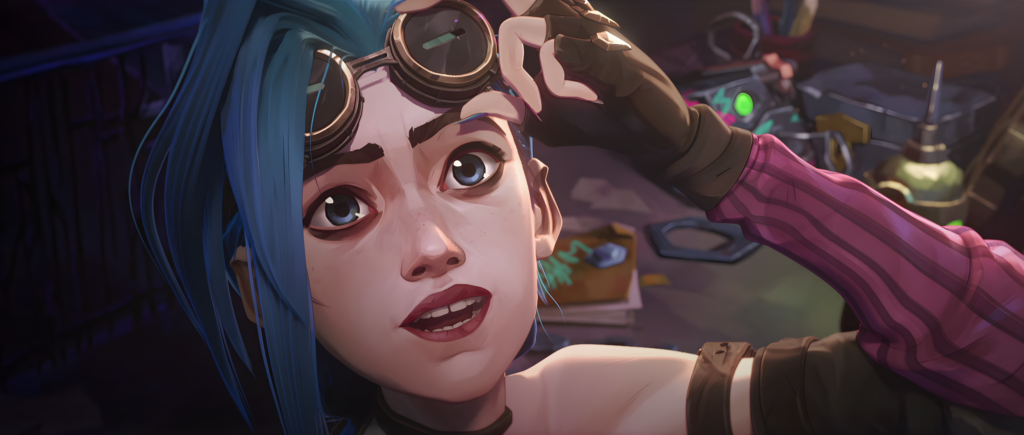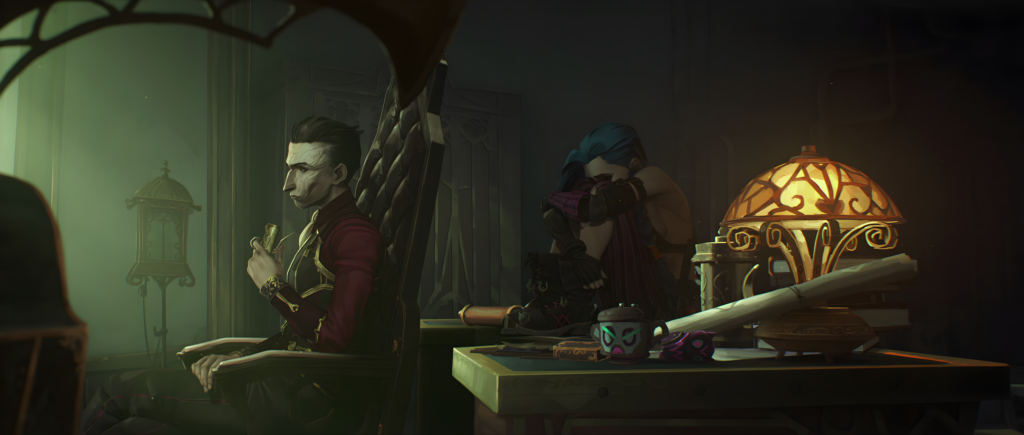With the release of Arcane: League of Legends Season 1, many non-fans of League of Legends have shown interest in the franchise. There is confusion, however, when they find out that Arcane lore is very different from canon lore. While the real reason behind this decision by Riot is currently unknown, it leaves the Arcane team with room to be as creative as possible. This leads to interesting storytelling choices and plot progressions. Today, we want to talk about some of the key differences between the game and Arcane: League of Legends.
Vi and Powder
The whole show of Arcane revolves mainly around the relationship between Vi and Jinx. We see that a lot of major events are influenced by their reunion and clashing in the show. However, the in-game lore is drastically different from what we’ve been shown. In fact, it wasn’t until much later that Riot revealed that the both of them were sisters! Let’s go over the background and history of the two.

In Arcane, we’re shown that Vi and Powder (Jinx) are orphans from the great Zaunite rebellion against Piltover and were raised by Vander. The two grew up together and eventually got separated because of Silco and his gang. In the canon lore, Vi and Jinx separated at a young age and took different paths growing up.
Vi became a criminal and joined a criminal gang at the ages of 6 and 11, respectively. It wasn’t until two bad run-ins that Vi left the gang and became a solo criminal who only stole from other criminals. She lived this way until being offered the chance to become an Enforcer under Caitlyn.
On the other hand, Jinx has quite a few similarities with her canon counterpart. They were both young inventors who liked to tinker and became criminals at a young age. Both of them also had encounters with Shimmer, but in very different instances. Arcane Jinx had Shimmer injected to save her life, while canon Jinx dabbled in Shimmer as it was common with Zaunite youths.

Canon lore tells us that Jinx was a normal Zaunite youth until a tragic accident traumatized her and turned her into the criminal, Jinx. While this accident isn’t explicitly stated or talked about in detail, many people speculate it involved Shimmer. In Arcane lore, the event that turned Powder into Jinx was also the event that separated Vi and Powder.
While the Arcane lore and canon lore are significantly different, it doesn’t change the fact that their story is one of heartbreak. We can’t wait to see how things wrap up in Arcane: League of Legends Season 2!
Zaun and Piltover
Arcane: League of Legends portrays Piltover as the main city with Zaun being born of the slums and the unwanted of the city. However, in the canon lore, this is not true. In canon League of Legends lore, Zaun was the original city. It was built on the border of the Shuriman empire and acted as a trade city. From this constant innovation and mercantilism, the city developed more and more until it expanded upward. This is where the city of Piltover was born. In fact, the history of Zaun is more than 3,000 years old in the canon lore.

Somewhere down the road, Zaun and Piltover separated and became independent yet symbiotic states. Piltover was a city of innovation, progress, and strict regulation. Zaun, on the other hand, was a city of production, trade, and unchecked industry. The wealth and wastes of Piltover flow into Zaun and the unregulated industry of Zaun serves as Piltover’s testing ground.
In the Arcane lore, Zaun (Undercity) is a byproduct of the unwanted and forgotten of Piltover. It’s a community left behind by the city of progress and disdained by the wealthy. Rather than being its mirror, Zaun is more of a waste of Piltover. Vastly different from the history of the two in canon, this artistic direction lends itself to better storytelling. With how the show paints Zaun and its people, it’s easier to push a message about progress and how it leaves behind those unable to keep up. Undercity is much a fault of the people of Piltover as it is the denizen’s inability to be born rich.
The Use of Hexthech and Chemtech

In Arcane lore, Hextech is a rather new innovation and is a product of Jayce and Viktor’s research. However, the canon history of Hextech is quite different. In the canon universe, Hextech is a longtime staple energy core for Piltover. These crystals are mined by the mercantile clans of Piltover and regulated by Clan Ferros. They have been around way before the birth of our protagonists in the show and have been used in every single invention in Piltover. Heimerdinger is in fact one of the most notable champions in the game to use Hextech for everything he makes. A mirror opposite of his Arcane version who fears and is wary of magic.
In Arcane lore, Hextech is shown to be a new invention, and the untapped possibilities seem endless. Jayce believes it can be used for so much more, and we see the city of Piltover develop alongside it.

On the underside, Zaun also developed technology that utilized the abundant toxic chemicals in their city. Being denied the funding and technology for Hextech, the Zaunites turned to chemicals. Chemtech was their answer to the mass production of Hextech, and rather than using magic crystals, the Zaunites used potent chemicals and technology.
It’ll be interesting to see how much further technology in the show has advanced once Arcane: League of Legends Season 2 drops this weekend! Personally, I like to look at Arcane, not as an adaptation of League of Legends. It’s more of a new story based on content and characters from the canon universe. Though vastly different, there are a lot of storytelling opportunities with the route Arcane is going.
Interested in a recap of the first season? Here’s our article on what went down!
Read More:
Arcane Season 1: Everything You Need to Know
Uniqlo X League of Legends: Exclusive Deals and Merch this 11.11!





